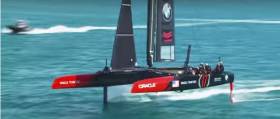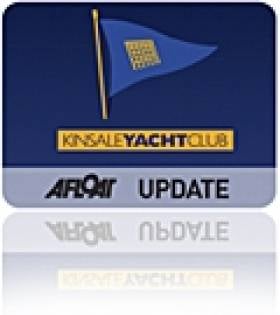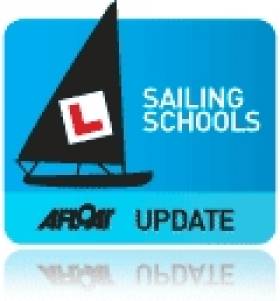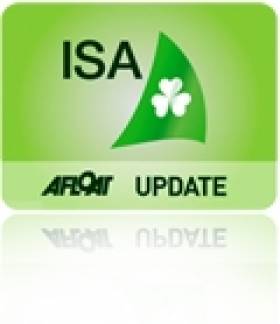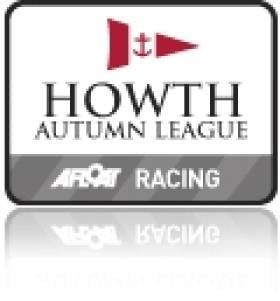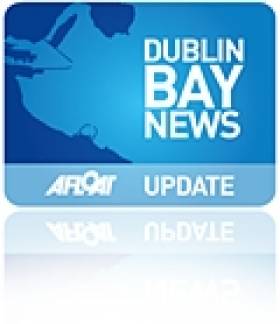Displaying items by tag: yacht
Wing Sail & Foils - America's Cup Yacht Ready for Take Off
The wingsail on ORACLE TEAM USA’s racing yachts and the wings on airplanes operate in similar fashion. As Ian “Fresh” Burns explains, a significant amount of force is generated to propel the boat faster or lift a plane off the ground.
And, the team is utilising the aerodynamic know-how of Airbus to help achieve optimum performance on the water.
Who needs an engine, these days?
Irish Woman Dies in Yacht Capsize
An Irishwoman has died after a yacht capsized and broke into pieces in South Africa. The 49-year-old woman was on-board the boat Tara in the early hours of yesterday morning with two other crew members when the incident occurred according to the Irish Sun.
The boat turned over between Melkbosstrand and Yzerfontein on the West Coast in Western Cape.
A 66-year-old Irishman, who is a resident in the area, managed to swim to the shore and raise the alarm.
However the Irish woman and a Scottish male were killed in the incident.
The Irish Sun has more on the story here
Ireland’s Boats & People – How Do We Get Them Together?
The recently-published ISA Survey of Club Racing commissioned and supervised by Board Member Jack Roy has started the process of putting together a realistic picture of how we sail and go afloat for recreation, and it was analysed on publication here in Afloat.ie.
It’s logical to have made the beginning with club racing, as racing provides its own narrative and a straightforward set of entry numbers and results. But it will become more complex as the national authority tries to provide realistic figures for day sailing’s less competitive aspects. And of course, once we enter the world of cruising as defined by sailing and boating projects which include passage making, both coastal and offshore, together with overnight on-board stops, then it can become much more difficult to get meaningful data.
Yet with the ISA’s Cruising Conference for February 20th already booked out within a few days of being announced on Afloat.ie, clearly that is an area in search of services and support, a section of sailing which is difficult to quantify yet obviously of strong interest to a significant number of boat enthusiasts. W M Nixon takes a look at how the complexity of our sport’s many specialities makes it difficult to provide a clearcut picture for possible recruits to sailing.
Where would we be without the International Optimist Dinghy? The little solo-sailing boxes and their attendant support teams of mum and dad and the dog and the old 4X4 or station wagon or people carrier or whatever may seem to take up an awful lot of space and time, and all just so that one little person can go sailing.
But at least that one little person does go sailing. The ISA figures are brutally straightforward. In terms of genuine turnouts afloat at clubs throughout Ireland, in boat numbers the active Optimists are exceeded only by the Lasers, and this is arguably because Lasers aren’t age-limited, whereas the Optimists most definitely are.
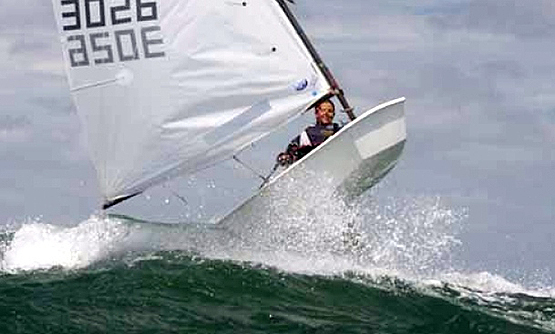
Optimist airborne. This is Ireland's second most popular class
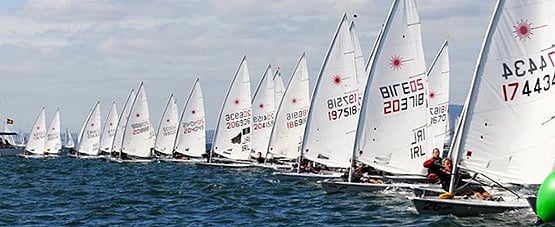
Ireland’s most popular dinghy class, the Laser is seen here at the Zhik Irish Nationals at Ballyholme
So we give a qualified cheer for the success of these two little boats. But it’s qualified because they’re single-handers which fail to provide any crew-relating sailing skills. Leading sailing figures as diverse as Des McWilliam of Crosshaven and Norman Lee of Greystones have been eloquent in promoting the notion that we should be doing more – much more – to encourage two-handed boats, and if we can persuade people into three-handed boats, well, so much the better.
Certainly that’s one of the reasons why our header photo says so much. A lone sailor in an Optimist or Laser promotes too much of a solitary, even an isolated image. And a two-handed boat like the GP 14, whose strong fleet figures in the ISA survey show the class’s vigour, is arguably just an act for a dynamic duo – it’s Strictly Come Dancing goes sailing…..
But getting three together to race a characterful boat like the National 18 with style – now that’s something special, that really is a superb combination of people skills interacting with sailing talent. And it’s a joy to behold. Yet anyone can see that for a complete beginner to sailing, this extraordinary silhouette of Tommy Dwyer’s National 18 against the November sky above the Hill of Howth will have an otherworldly air about it – “That’s not for me” is as likely a response as “Let’s have a go at that”.
Even those of us who have been in sailing for longer than we care to remember find the image decidedly thought-provoking, for we have some idea of what has been involved in creating the circumstances for this seemingly effortless balancing act, this lighter-than-air effect in the unlikely setting of a November afternoon.
Over the past year or so we have been recounting in Afloat,ie how the Cork Harbour National 18 Class, with very tangible backing from the Royal Cork Yacht Club, have been in the forefront of the development of the new ground-breaking Phil Morrison take on the long-established National 18, which is a developmental class which from time to time takes a leap in hull design, and moves forward in order to keep the spirit alive.
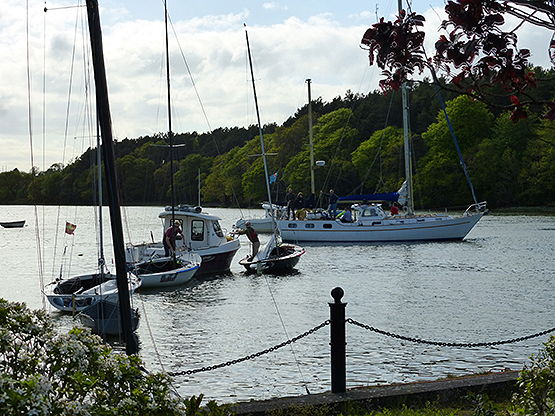
The National 18s are part of the fabric of Cork Harbour sailing. Before the new Morrison boats arrived in July, the old fleet were seen here in May 2015 after their annual race to Ballinacurra in northeast Cork Harbour in company with the Dwyer brothers’ cruising ketch. Photo: W M Nixon
Acceptance of this is something which seems to be bred into Cork’s National 18 enthusiasts, many of whom have the advantage of being firmly of the opinion that a proper dinghy needs three people to sail it. But the social matrix which has built up around Cork Harbour over many decades with this concept at its heart is not something which will necessarily travel easily to other areas, and although the six boats of the National 18 flotilla which visited Howth for the Open Day got a great reception and gave many people from other classes a marvellous time afloat, it’s probable that the very different mood around sailing in Dublin means that something so technically and socially challenging as a three man dinghy is a step too far.
Sailing in the greater Dublin area seems to exist within a framework of independent balloons. While there are those who will happily move from one boat type to another and cheerfully spread their talents and enjoyment about, by contrast there’s the Dublin Bay Sailing Club Thursday Evening Phenomenon.
Thursday is when the DBSC cruiser classes go out to race. And there’s an entire cohort of people, mostly folk who work in offices in the city, who on a Thursday evening go straight to Dun Laoghaire, get aboard a pontoon-based cruiser owned by someone else, go out and race in some very specific crewing job, then come back in and have supper in club or pub with their shipmates, and then that’s it until next Thursday. Just one evening each summer mid-week is their entire sailing programme. Weekends are for something else. And as for the hassle and mixed joys of boat ownership and maintenance, that’s not their department at all.
It’s a very metropolitan, very citified yet specialized way of doing things, and Dublin is one of the very few cities whose location facilitates it. It will be fascinating to measure it, for Dublin’s way of sailing is steeped in history and tradition. But for now it’s refreshing to look at a place which has had a sailing tradition in times past, but somehow lost it, yet it’s coming back again, and one of the good news stories towards the end of 2015 is that the new Youghal Sailing Club has been accepted into the ISA fold.
Youghal at present is a difficult place for sailing, as the tidal power of the mighty Munster Blackwater sweeps straight through the estuary and along the old town’s waterfront, and the creation of any meaningful modern facilities will have the immediate difficulty of silting by incredibly adhesive black mud.
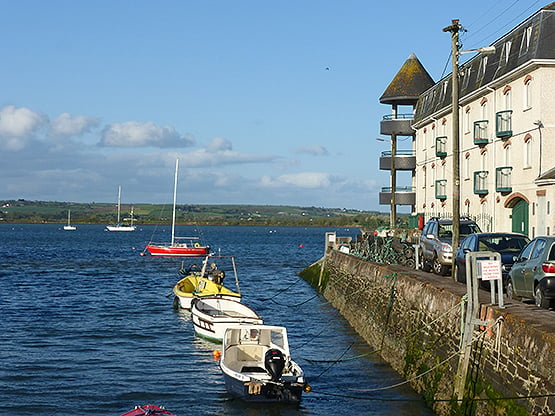
With the sun out, and the tide in, Youghal looks to be an ideal location for the easy installation of a marina….....Photo: W M Nixon
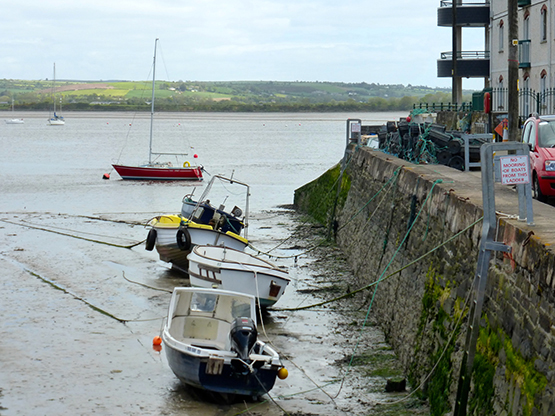
….but with the sun in and the tide out, the mud problem is revealed. Photo: W M Nixon
Thus, as dedicated Afloat.ie readers will have recently observed, no sooner had one group announced that a marina in Youghal was on the way than another longer-established group quietly suppressed the story, as they’re well aware of the engineering and dredging difficulties involved, and premature announcements will only slow any project in the long run.
In the fullness of time, a marina at Youghal will be a godsend for any cruiser plugging along the south coast. It’s not always the easiest coast in the world to make a passage along, sometimes it can seem an awfully long way to Cork from Dunmore East or Kilmore Quay even if you do make stopovers at Dungarvan or Helvick, and there are times when the hardiest seafarer is glad enough to get his boat secured to a good big pontoon.
But that’s for the future. Meantime, the locally-based keelboats are using either the restless anchorage off the town, or the more serene pool across the estuary at Ferry Point on the east shore, while the new club’s flotilla of GP 14s are stored in spare warehouse space during non-sailing time, and when they do go sailing it turns out their clubhouse is a moveable feast - it’s a caravan which can be towed to a choice of sailing locations.
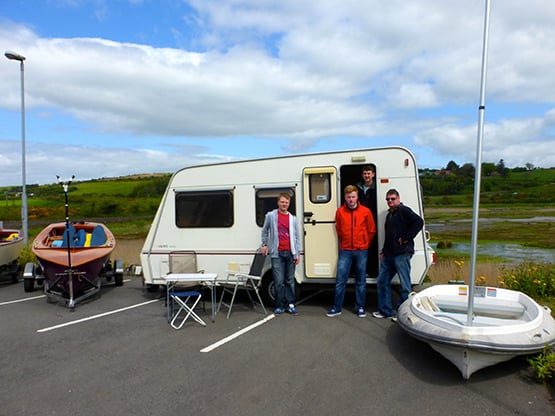
A moveable feast. Members of the newly-affiliated Youghal Sailing Club with their caravan HQ, Adrian Lee in doorway. Photo: W M Nixon
On the national stage, it is young Youghal GP 14 sailor Adrian Lee who has been among those flying the club’s flag, and there’s hope in the air. When we were there in May on a fine day that promised a summer which never arrived, we couldn’t help but think that when they do get their facilities and maybe even a clubhouse, they’ll look back to the days of the caravan and ad hoc racing arrangements with sweet nostalgia. For sometimes, it’s much better to be travelling than it is to arrive.
But for the rest of us, the message from Youghal is simple. The sea is for sailing. Use it or lose it. By all means get proper people surveys done which indicate the way numbers are shaping up and things are going. But really, if you want to persuade people to go sailing, the best way is by example, getting afloat as much as possible yourself. And maybe then you’ll find the time to welcome aboard newcomers too.
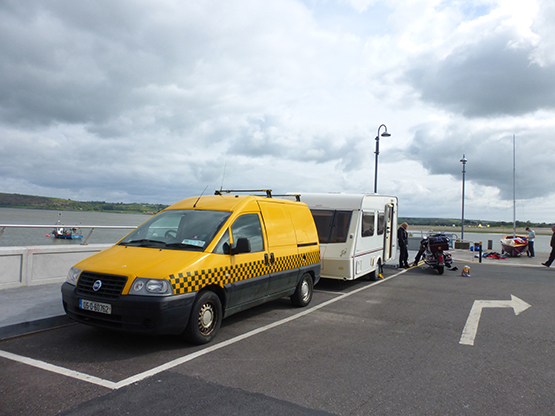
Reviving Youghal sailing – on race days, the club’s caravan is simply towed down to the pier and the races are started from there. Photo: W M Nixon
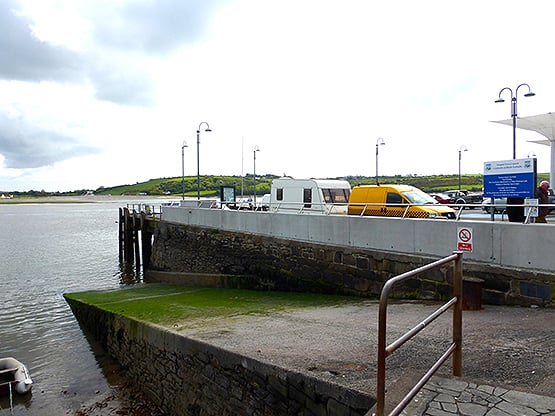
Youghal’s massive public slip provides launching for the YSC sailing dinghies, but during 2015 the boats had to be stored at the other end of town when not in use. Photo: W M Nixon
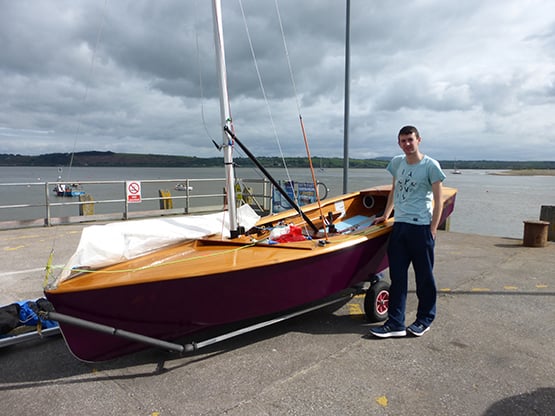
The pace-setter. Adrian Lee of Youghal SC with his Duffin-built GP14. Photo: W M Nixon
Click to download: ISA Survey of Club Racing
Larne RNLI Lifeboat Launches to Assist 24ft–Yacht in Difficulty
Lifeboat crew with Larne RNLI launched their all-weather lifeboat this afternoon (Saturday 5 September) at 3.05pm following a report that a 24 ft yacht with three people onboard was in difficulty south of Muck Island. The request to launch was received from Belfast coastguard.
The all-weather lifeboat, Dr. John McSparran, under Coxswain Robert Rice was immediately launched and underway. The yacht with three people onboard was experiencing engine difficulty in challenging conditions.
Once on scene a lifeboat crew member was transferred onboard the yacht and a tow line was set up. Conditions were challenging with winds registering force 6 and a rough sea. The yacht was then towed to safety into Larne lough and secured to a mooring.
Commenting on the callout Larne RNLI Coxswain Robert Rice said, ‘While the yacht was suffering engine difficulties, the weather made the callout extremely challenging. Thankfully an experienced lifeboat crew were on scene to ensure that a tow could be safely established and the vessel brought to safety quickly and with no casualties.’
Kinsale Yacht Club has won a blue flag for its coastal marina for the first time in today's An Taisce announcement of the International Blue Flag Awards for 2015.
A total of 144 awards were presented by the Minister for the Environment, Community and Local Government, Mr. Alan Kelly, T.D, at an awards ceremony held on Ballinskelligs Beach in Kerry. Ireland's diverse coastline with long sandy beaches, bustling promenades and rocky shores have something for everyone.
Kinsale Yacht Club marina is located in a natural, virtually land-locked harbour on the estuary of the Bandon River, approximately 12 miles south west of Cork harbour entrance. It is home to a thriving fishing fleet as well as frequented by commercial shipping, it boats two fully serviced marinas, with the Kinsale Yacht Club & Marina being the closest to the town.Visitors to this marina automatically become temporary members of the club and are therefore entitled to make full use of the facilities.
Speaking at the awards ceremony Minister Kelly said, "Blue Flags represent excellence. They are a clear signal of quality and are something to be cherished. I am delighted to announce that today we will be awarding a total of 86 Blue Flags; 81 for beaches and five for marinas. A blue flag flying at a particular location means that it has achieved excellent water quality to standards set by European and national Regulations, and a very high grade across a wide range of other criteria"
He added that, "This is testament to the sterling efforts of local authorities, An Taisce and of local communities in ensuring that their beaches meet the standards of excellence required for a Blue Flag or Green Coast Award',
81 beaches and 5 marinas were awarded the prestigious Blue Flag award representing an increase in 6 Blue Flag awards since 2014.
Ms Annabel FitzGerald, Coastal Programmes Manager said that, "The Blue Flag is an award of excellence, the beaches and marinas that have achieved this accolade today have complied with strict criteria relating to water quality, safety, facilities for visitors, beach management, environmental education and the provision of information."
In Cork, Redbarn and Garretstown have regained the Blue Flag status and in Wexford, Ballinesker is being awarded the Blue Flag for the first time. 5 beaches that failed to comply with the requirements of Blue Flag in 2014 because of storm damage have regained their Blue Flag status, they are Bertra and Mulranny in Mayo, Rossbeigh in Kerry and Miltown Malbay and Spanish Point in Clare.
Brittas Bay North in Wicklow, Enniscrone in Sligo and Skerries in Fingal have lost their Blue Flags due to failure to comply with water quality requirements for the Blue Flag.
58 beaches in Ireland were awarded the Green Coast Award representing an increase in 4 awards since 2014. Bishopsquarter and Seafield in Clare and Inchydoney East in Cork are being awarded for the Green Coast Award for the first time. In Wexford, Ballyhealy, Ballymoney, Booley Bay, Grange and St Helens Bay have also achieved the accolade.
Having not met the excellent standard required, Skerries in Fingal, Rathmullan in Donegal, Enniscrone in Sligo and Ballycastle in Mayo did not regain the Green Coast Award for 2015.
"The Green Coast Award recognises beaches for their clean environment, excellent water quality and natural beauty. These beaches may not have the necessary built infrastructure required to meet the criteria set for Blue Flag status however they are exceptional places to visit and enjoy our rich coastal heritage and diversity."
An important aspect of the Green Coast Awards is the involvement of Clean Coasts groups of which there are now 440 comprised of thousands of volunteers throughout the island. Ms FitzGerald, paid tribute to these groups stating that, "Clean Coasts groups contribute significantly to the protection of Irelands coast, in 2014 over 800 beach cleans took place and these groups removed over 500,000 items of marine litter from the marine environment."
"Local Authorities, Marina Operators and local communities should be commended for their efforts in achieving Blue Flag and Green Coast award status today" Ms FitzGerald concluded.
SUMMARY OF AWARDS
o 144 awards presented today, an increase of 10 on last year's number.
o 86 Blue Flags are being awarded today in the Republic of Ireland, 81 to beaches and 5 to marinas.
o This is an increase of 6 Blue Flags since 2014, representing an increase of 5 Blue Flag beaches and 1 Blue Flag marina.
o 58 Green Coast Awards are being presented today representing an increase of 4 Green Coast Awards since 2014.
o 6 beaches will be presented with both the Blue Flag & Green Coast Award achieving dual award status. These are Portmarnock, Portrane and Donabate in Fingal County Council; Salthill and Silver Strand in Galway and Rosses Point in Sligo.
BLUE FLAGS GAINED
Beaches (+8)
o Wexford: A Blue Flag is being awarded to Ballinesker for the first time.
o Cork: 2 Blue Flags were regained in Redbarn and Garretstown.
o Kerry: A Blue Flag was regained in Rossbeigh.
o Clare: 2 Blue Flags were regained in Miltown Malbay and Spanish Point.
o Mayo: 2 Blue Flags were regained in Mulranny and Bertra.
Marinas (+1)
o Kinsale Yacht Club has been awarded the Blue Flag for the first time.
BLUE FLAGS NOT AWARDED
Beaches (-3)
Blue Flag applications were received for the following beaches but we were unable to award the Blue Flag.
o Wicklow: Brittas Bay North did not comply with water quality requirements for the Blue Flag.
o Sligo: Enniscrone did not comply with water quality requirements for the Blue Flag.
Blue Flag applications were not received for the following beaches which did have the Blue Flag in 2014.
o Fingal: Skerries South Beach did not meet the excellent standard required for Blue Flag status.
GREEN COAST AWARDS GAINED (+9)
o Clare: Bishops Quarter and Seafield are being awarded the Green Coast Award for the first time.
o Wexford: Ballyhealy, Ballymoney, Booley Bay, Grange and St Helen's Bay are being awarded the Green Coast Award.
o Fingal: The Burrow is being awarded the Green Coast Award for the first time.
o Cork: Inchydoney East is being awarded the Green Coast Award for the first time.
GREEN COAST AWARDS NOT AWARDED (-5)
o Donegal: Rathmullan failed to comply with the water quality standards required for the Green Coast Award.
o Sligo: Enniscrone failed to comply with the water quality standards required for the Green Coast Award.
Green Coast Award applications were not received for the following beaches which did have the Green Coast Award in 2014.
o Mayo: Ballycastle in Mayo did not comply with water quality standards for the Green Coast Award.
o Fingal: Skerries did not comply with water quality standards for the Green Coast Award.
o Wexford: Ballinesker did not apply for the Green Coast Award but is in receipt of the Blue Flag in 2015.
Learn to Skipper A Yacht Offshore
#offshore – Skippering a yacht on an ocean going passage is a serious undertaking requiring significant skills and experience. Getting those skills and experience has always been tricky and every year the rescue services are called out to assist yachts and skippers that have gone beyond their means.
Previously, a skipper looking to build ocean-going experience has had few options other than to join a delivery yacht or maybe crew on the ARC. This gave mileage and some experience, but was no substitute for expert tuition from ocean-going instructors.
To fill this skills gap, a UK sailing school operator, Rubicon 3 has launched a series of three Ocean Crossing Masterclasses, running between October and December 2015.
Based on Rubicon 3's specialised 60' expedition sailing yacht, each masterclass comprises an intensive two weeks of tuition at sea, taught by two instructors. The syllabus has been developed from their skippers' huge experience of expedition and ocean sailing and is a mix of practical and theoretical lessons on how to skipper a boat across an ocean. Every day sees a structured lesson plan, with all critical skills covered. These include route planning; weather routing; yacht preparation; fixes of common problems at sea; celestial navigation and heavy weather techniques, including practical demonstrations of storm sails, tri-sails, drogues and storm boards.
These masterclasses are open to everyone, with ten places on board each one. There are watch leader positions on each masterclass ideally suited for those looking to gain their RYA Ocean Yachtmaster qualifying passage.
Bruce Jacobs, director of the company said, "It's critically important that before skippering a yacht far offshore, you have the practical skills and experience to match your theory. Whether it's how and when to deploy a tri-sail, or conditions are getting nasty and it's time to launch a drogue - the first time you do it should not be the time you really need it. These masterclasses are the very best way to prepare yourself to skipper offshore and to vastly widen your cruising range."
Masterclass dates, routes & prices
Bristol, UK - Baiona, Portugal: October 18 - November 1, 2015. £1,395
Baiona - Madeira - Azores: November 7 - 22, 2015. £1,495
Azores - Madeira - Gibraltar: November 28 - December 13, 2015. £1,495
Irish Sailing's New Strategic Plan Charts 2020 Course
#isa – Two years after a heave against the Irish Sailing Association (ISA) a new five year strategic plan has been published writes David O'Brien in this morning's Irish Times sailing column HERE.
The Plan is for the period 2015 - 2020 and is based on the views that were put to a 'Strategic Review Group'. The SRG was asked by the Board in 2013 to assess where the Association stood and how it needed to adjust to better serve the sport of Sailing. The Board accepted its Report and tasked a group to prepare a new Strategic Plan for the ISA based on its contents.
This blueprint (downoad the draft plan below as a 2mb pdf file) looks like a positive step forward not least because it makes an attempt to implement measurable targets for the good of grass–roots sailors. That rule was something lacking on a now scrapped 2020 vision document sub–titled 'grow the sport, grow the membership, grow the organisation'. This discredited plan turned out to be boom time folly and like so many other projects around the country at that time, poorly thought out and only half–built.
On foot of it, in 2013 a band of dissenting sailors held the ISA to account for its lack of performance. Back then, association efforts were more focussed on getting the ISA genie back in the bottle than the sport back on track. In a push for change at the National Yacht Club (NYC) in April 2013, the embattled body heard over 300 suggestions for change.
Not least was the fact sailing had lost a quarter of its members in recession and key yacht clubs are still in choppy financial waters. A massive fall off of junior sailors also presented an inconvenient truth that problems lay not with the children but with the paucity of guidance for newcomers.
Sailors like Norman Lee and Bryan Armstrong were joined by former president Roger Bannon (now its Treasurer) in calling for fundamental reform.
'The ISA has lost its way over the last few years," Bannon wrote in March 2013, giving his view of a bureaucracy 'detached from the reality of what is going on in the front line'.
Around the same time, County Wicklow dinghy sailor Lee said he wanted 'the ISA focus off elite sailing and the emphasis instead to be on enjoying sailing for fun as per the association's own articles of association'.
Two years on, an independent group of sailors has charted a new course but does this revised game plan satisfy these demands? Will it be a boost for clubs and classes, particularly smaller ones, or is the only comfort for them the fact that the process took place?
The underlying principle of the Plan is moving from a 'governance approach' to one of the principal stakeholders in the Sport working together with goal of encouraging and developing participation. The Association, Clubs, Training Centres, Classes and associated groups working in union to achieve those objectives underlies all of the strategies. There will be a renewed emphasis on utilising the input of volunteers to harness the skills and knowledge of active sailors so that the ISA can evolve and develop and respond to issues that arise.
The approach is in a logically presented format but there is very little that suggests the ISA will support ageing, less popular class associations, preferring rather to put faith in the bricks and mortar of clubs and training centres to strengthen access and participation avenues for current and potential sailors.
While many of the strategies are laudable, there will be difficulties in operating them, particularly where they are dependent on the vigour, enthusiasm and skills of volunteers at club level.
Indeed, there may be some instances where ISA aspirations are in direct conflict with local trends and activities. For example, what will the Optimist and Laser classes say to the strategy of 'encouraging participation of younger sailors in two person boats' or the dinghy classes about the strategy of encouraging crewing in keelboats.
The scenario will create debate about the professional structure required to deliver on its aspirations particularly in the training area. Suitably qualified personnel are necessary to negotiate the tricky waters disturbed by the demands of the multiple agencies with a stake in the sport and its delivery – HSA, Department of Transport, Department of Education.
At the same time it would appear that the working plan appears to validate the ISA's High Performance department as many of the strategies suggested are actually currently operational.
There are a number of curious omissions:
·No mention of Paralympic sailing in the High Performance section
·No mention of Youth Worlds, a fertile ground for ISA recently
·No mention of financing the association, strangely in light of the discussion around its joint membership scheme.
Where does the balance lies when gauging the benefit of an organisation producing a strategic plan – is it the outcome or the process that is the more valuable exercise? Or worse still, is it the creation of a stick to be beaten with further down the road if targets are not achieved.
The ISA has been fortunate in being able to rely on some excellent volunteer directors for the overhaul process. The combination of effectiveness and commitment of the new board has brought the association a long way in a short time but how sustainable is this voluntary effort over time?
One doer maybe better than forty talkers but effective volunteers are hard to find. Finding an ISA President a year ago was not without difficulty in itself. In the absence of such voluntary effort, and with the benefit of experience, can the professional staff see this new plan through or is more help needed?
As a draft, this document will no doubt undergo some change in the process that now follows. And while there have been some changes at the ISA's Park Road HQ, the evolution of the ISA from the Ursula Maguire administered one-person organisation of 20 years ago continues with a relatively minor correction of the set and drift that had crept in in recent years. Are more changes still to come? Will there be a replacement for the recently departed training director? Perhaps too someone is also needed to support the club racing side – maybe in conjunction with the Irish Cruiser Racing Association (ICRA)?
The appointment of Regional Development Officers to assist Clubs and Training Centres has been seen as one of the ISA success stories in recent years and it is proposed to increase their availability to Clubs and Training Centres. The Board has already decided to add a further RDO to the two existing appointments to ensure the local availability of expertise and advice and facilitate greater co-operation and coordination between local Clubs and with Training Centres.
The primary role of the Clubs in growing the sport locally, attracting newcomers and maintaining the interest of both existing and new members is acknowledged. Better linkages between Clubs and Training Centres for their mutual benefit are proposed. This is in the knowledge that most newcomers interested in taking up Sailing feel more comfortable in approaching a Training Centre than a Club but the long term involvement of sailors in the sport is best ensured by them joining Clubs, participating in Club activities and enjoying the benefits - both practical and social - that membership provides.
The over elaborate structure of ISA training courses and the difficulties of qualifying, retaining and upskilling instructors was a widespread complaint when the Review Group conducted their research. Strategies to resolve those problems are proposed.
An often expressed view about the Club Training schemes for Junior sailors is the amount of effort committed to running courses by Clubs and the relatively poor transfer rate from the courses to Club involvement and activity afloat. It is planned to refocus the training courses away from a 'certificate chase' to an emphasis on developing the skills learned. An online sailing passport scheme to supplement the paper based certificate system is proposed. It will be trialled in the coming season and will allow the recording of both course attendance and other time afloat, whether racing or leisure sailing.
A strategy of encouraging the training of young sailors in two person boats, as opposed to single handed craft, is proposed, with a view to improving both their technical and social skills. A renewed emphasis on sailing being a sport for life and avoidance of the risk of sailor burnout by compressing skills acquisition into young sailors' early teens, are envisaged.
The redressing of the perceived imbalance between the support structures for those competing in the non-Olympic area and those involved with the High Performance area - essentially the Olympic arena - is proposed. This will not affect the support for the High Performance sector, which is funded through the good offices of the Irish Sports Council, but will instead propose that the support available to other areas of competition will be enhanced. Better access for Clubs and Classes to coaching at local level is one of the principal strategies envisaged and it is hoped that Clubs and Classes will be able to access both coaches with a High Performance background and those with experience of specific Classes.
It is proposed that the ISA should re-commence the co-ordination of a racing event calendar to facilitate the avoidance of clashes between events and re-establish the balance between local, regional and national events.
Now the process of re-evaluation has begun, the ISA is urging all sailors to play a role to win back participation in sailing. A green light from clubs and classes is key to this plan's success.
The following regional meetings are taking place:
Wed 21 Jan 15 7pm-9pm Dublin, Royal St George Yacht Club
Tue 17 Feb 15 7pm-9pm Cork, Rochestown Park Hotel
Tue 24 Feb 15 7pm-9pm Galway, Galway Bay Sailing Club
Howth Yacht Club Autumn League Counts Down to Saturday Climax
#hyc – Howth Yacht Club's (HYC) leaderboard showed some small changes to the leaderboards yesterday within the nine classes, but no change to the idyllic conditions after week five of the MSL Park Motors Mercedes-Benz sponsored event that has enjoyed for every day of the event so far. With one last race to go, some of the divisions show clear winners, but most will see the overall results decided next Saturday when the series is completed.
In the one-design keelboat fleet, John Phelan and his team on their J80 lead that class after their second win in a row, but only by 2 points from the Flynn-Buckley team. A first place in the Puppeteer Class for Alan Pearson and team on his Trick or Treat won't be enough to threaten the lead of the Walls-Browne partnership and crew on Gold Dust. Their 3 wins earlier in the scratch series will prove to be unassailable when the results emerge even after next week's race. Cyprian Feeley's Cloud 9 will have to be struck by very bad luck if Ibis manages to catch up in the Puppeteer handicap division, as Susan Sheridan's team will have to win next week and hope that Cloud 9 finishes in worse than 8th position if they are to sneak ahead.
With the class competing in next week's Freshwater Keelboat Regatta in Lough Derg, the Squib Class result is final with Fergus O'Kelly's Selik winning the scratch prize and Ronan MacDonell's Fantome victorious on handicap.
Brian and Conor Turvey's Isobel's won this week's Howth 17's race, positioning their classic one-design within 2 points of the leading boat - Marcus Lynch and John Curley's Rita. Deilginis sits one point behind in third, but the maths mean that they are now unable to win the overall next week. In their handicap division, Tom Houlihan's Zaida will surely have to give its all next week if they are to pass out the consistent Sheila, who's skipper Mary Faherty has put the youngest 17-Footer seven points ahead.
In Class 1 IRC, Norbert Reilly and Alan Chamber's win on Crazy Horse halted the seemingly unstoppable J109 Storm (Pat Kelly) who had to be content with a 3rd place following Ross McDonald's Equinox finishing 2nd. The Equinox crew will also have to settle for second in the ECHO division, as Storm's domination of Class 1 will now see its crew collect both IRC and ECHO overall prizes next week.
Despite a late charge by the Colwell-Cobbe owned Fusion, Anthony Gore-Grimes and his crew on Dux will certainly win the Class 2 ECHO prize at the end of the series, but they are being pushed all the way in the IRC division by Mike and Ritchie Evans' The Big Picture, followed one point behind by Jonny Swan and Peter Freyne's Harmony.
The closest leaderboard would appear to be in Class 3, with both IRC and ECHO divisions split by only a few points. Vince Gaffney's Alliance II is being pushed all the way by the J24s Scandal (Brian McDowell) and Kilcullen (HYC's Under 25 team) in IRC, while Scandal and Lionel McMurtry's Hellyhunter sit closely behind Kilcullen going into the last race.
Colm Bermingham and crew on Bite the Bullet won their race in Class 4 IRC, but Tiger (Stephen Harris and Frank Hughes) still lead by a slender margin of 2 points while David Sargent's Indulgence will win the ECHO prize next week. In Class 5 ECHO, Harry Byrne's Alphida and Gordon Knaggs's Jokers Wild are neck-and-neck going into the final race, but Kevin O'Byrne's Mary Ellen5(mathematically) could still manage to win. The Class 5 IRC division also sees Alphida in the running, but needs to catch leaders Jebus (Emmet Dalton) following their win this week.
In the Mini Series event, many of the existing leaders in the various classes remain on top of the results list, however Paul Colton's Cri-Cri has managed to make an impression in Class 3 and contends the lead in IRC while leading on ECHO. A 3-way tie in the Class 1 ECHO mini series between Crazy Horse, Dear Prudence (Patrick Cruise O'Brien) and Equinox will make for an exciting end to their racing next week.
This week's prizes were presented by MSL Park Motors Mercedes-Benz Business Development Executive Patrick Manning, who also clearly enjoyed taking part in the racing on board Declan Gray's Sapphire.
#windsurf – The five-mast Wind Surf cruise yacht will dock at Dun Laoghaire Harbour at 7am on Saturday, 12th July. It will remain docked at the south Dubllin Bay port until 6.30pm when it will depart to the Isle of Man. It also visited Dublin Bay on Wednesday emerging from Dublin Port under sail.
The Wind Surf is the largest ship in the Windstar Cruises fleet and is known for its luxurious amenities carrying 312 guests and 191 international staff. The Wind Surf, one part sailing yacht and one part upscale cruise ship, has seven triangular, self-furling, computer operated sails.
'Wind Surf' arrives in DL pic.twitter.com/B4aa2rv0tv
— Gareth (@garethoconnor) July 12, 2014
Yacht Capsizes in Surf at Spanish Port of Zumaia
#capsize – A Bavaria 38 yacht, with seven crew on board, enters the narrow channel leading to the port of Zumaia on the Basque coast of Spain this month with dramatic consequences. 'The swell is of medium size, the operation is dangerous, but passable' according to local photographer Gabi Aymat who shot this dramatic capsize video.
A huge wave sweeps on to the boat and rolls it over knocking some of its untethered crew over board. The good news is that the crew survived and the boat is also safe, surviving its roll without any serious damage, according to Aymat.




























